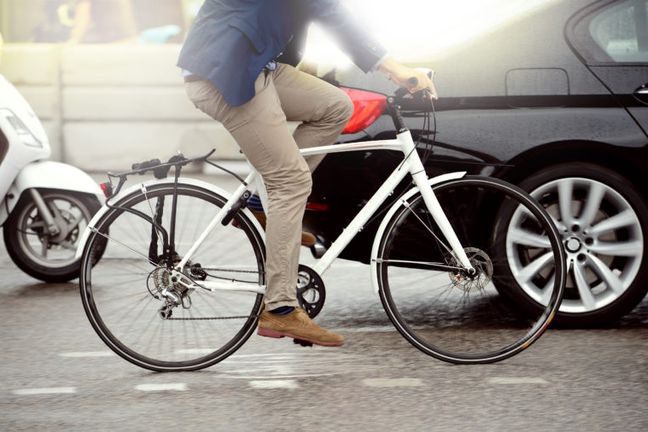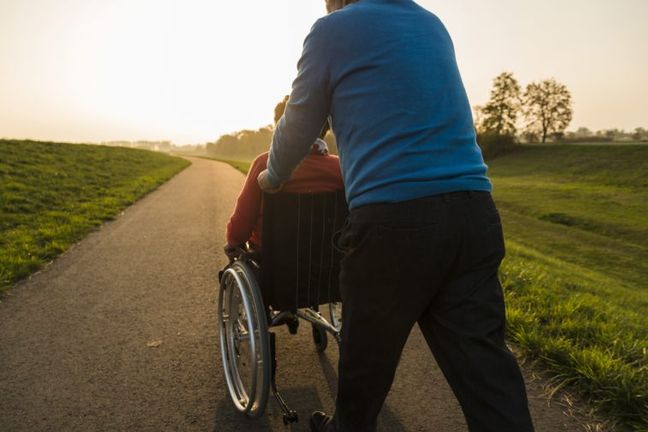Us Generation Xer’s will be the last generation who can recall a life in a world without internet, computer dependency, cellphones, safe playgrounds, and, the subject of this article, wearing helmets while riding our bicycles (we are also the last generation to recall what really good music sounds like, but I digress). As apathetic Gen Xers retired their flannel and baggy clothes in favor of becoming responsible parents, it would be unthinkable to not outfit our children with a helmet. Statistics support the use of a helmet to reduce significant traumatic brain injuries and death. However, most states do not require the use of helmets when it comes to operating bicycles, scooters, or motorcycles.
A General History – Bicyclists and Motorcyclists
According to data from the U.S. Department of Transportation’s Fatality Analysis Reporting System, a total of 854 bicyclists were killed in crashes with motor vehicles in 2018.[i] This represents a 7% increase from the 800 bicyclist deaths that occurred in 2017.[ii] Although bicyclists’ deaths have decreased 15% since 1975, they have increased 38% since reaching their lowest point in 2010.[iii] Most bicyclist deaths in 2018 (87%) were those ages 20 and older. Deaths among bicyclists younger than 20 have declined 89% since 1975, while deaths among bicyclists 20 and older have tripled. This seems to make sense, as modern-day adults are relying more than ever on bicycles for commuting and recreation. Current social mores dictate parents will outfit their children with helmets, protecting the younger generations and forming lasting safety habits; however, because modern-day parents of a certain age did not grow up wearing helmets, they may be less likely to don one themselves, despite increased dependency on a bicycle.
In a majority of bicyclist deaths, the most serious injuries are to the head, highlighting the importance of wearing a bicycle helmet.[iv] According to the Insurance Institute for Highway Safety, 61% of bicyclists killed in 2018 were not wearing helmets, while helmet use was unknown for another 24%.[v] However, helmet use among those killed has remained relatively consistent at about 16% since 2010. Helmet use has been estimated to reduce the odds of head injury by 50%, and the odds of head, face, or neck injury by 33%.[vi]
Twenty-one states and the District of Columbia have helmet use laws applying to young bicyclists; however, none of these laws applies to all riders.[vii] Local ordinances in a few states require some or all bicyclists to wear helmets.[viii] The odds that a bicyclist will wear a helmet are 4 times higher after a helmet law is enacted than before a law is passed.[ix]
Turning to motorcyclists, studies have found helmets reduce the risk of death by 37 to 42% percent.[x] Motorcyclists who do not wear a helmet are three times more likely than helmeted riders to suffer traumatic brain injuries.[xi]
In 1966, many states, recognizing the dramatic increase in motorcycle accidents, enacted laws requiring the use of helmets by motorcycle riders.[xii] Inducement for these enactments was provided by the Federal Highway Safety Act, under the authority of which the Secretary of Transportation conditioned the availability of certain federal highway funding on the existence of state helmet-use statutes.[xiii] By 1975, all but three states had passed mandatory helmet laws. However, in 1976, the Secretary of Transportation’s authority to preserve enactment of helmet laws was withdrawn, and states began to repeal their laws in rapid fashion.[xiv] In 1977, fourteen states repealed their statutes.[xv]
The Birth and Death of Colorado’s Helmet Law
In 1973, Colorado enacted a law requiring all persons operating a motorcycle to wear a protective helmet. It did not apply to bicyclists. However, soon thereafter, in 1977, the General Assembly expressly repealed Colorado’s helmet law.
Despite the repealing of the helmet law, the Colorado Department of Transportation cites on its website, although helmets are proven to save lives, riders age 18 and over are not required to wear helmets in Colorado.[xvi] However, if a motorcycle operator or passengers are under age 18, they must wear DOT-approved helmets.[xvii]
Despite Increased Likelihood for More Serious Injury or Death Without a Helmet, Colorado Bicyclists or Motorcyclists who Accept the Risk are Protected in the Courtroom
By way of comparison, Colorado permits introduction of a plaintiff’s non-compliance with the state’s seatbelt law as evidence to support the reduction of noneconomic damages only. Evidence of failure to comply with the seatbelt law is admissible to mitigate damages with respect to any person who was involved in a motor vehicle accident and who seeks in any subsequent litigation to recover damages for injuries resulting from the accident.[xviii] Such mitigation is limited to awards for pain and suffering and cannot be used for limiting recovery of economic loss and medical payments.[xix] There is no similar reduction available where a plaintiff was not wearing a helmet while operating a motorcycle, bicycle, or scooter. Riders aged 18 and over are not required to wear helmets in Colorado.
Under the law of comparative negligence in Colorado, evidence of a plaintiff’s failure to wear a protective helmet is inadmissible to show negligence on the part of the plaintiff or to mitigate damages.[xx] Contributory negligence bars recovery, while comparative negligence takes into account the negligence which caused the injury and reduces damages proportionately.[xxi] Under either theory, the trier of fact considers the plaintiff’s negligence in the balance.[xxii]
In holding non-use of a helmet is inadmissible at a civil trial, the Colorado Supreme Court explained the premise upon which negligence rests is a tortfeasor has a legally imposed duty or a standard of conduct to which he or she must adhere. The duty may derive from a legislative enactment of the standard of conduct or from a judicially imposed standard.[xxiii] In 1977, however, the General Assembly repealed Colorado’s requirement to wear a helmet, thereby removing any applicable standard of conduct for a rider.
The Colorado Supreme Court went on to justify the holding by explaining a defendant should not diminish the consequences of his or her negligence by the failure of the injured party to anticipate the defendant’s negligence in causing the accident itself.[xxiv] Moreover, a defense premised on an injured party’s failure to wear a protective helmet would result in a windfall to tortfeasors who pay only partially for the harm their negligence caused.[xxv] Lastly, allowing the defense would lead to a veritable battle of experts as to what injuries would have or have not been avoided had the plaintiff been wearing a helmet.[xxvi]
Takeaway
While the inadmissibility of non-use of a helmet due to lack of an enacted standard of conduct makes legal sense, the practical effect is disproportionately unfortunate, as defendants will ultimately pay, sometimes greatly, for a plaintiff’s failure to protect his or her own safety and mitigate damages. Decades worth of statistics and studies demonstrate the dramatic positive effects use of a helmet can have on limiting traumatic brain injuries and death, which, if proven, can each result in high verdicts. Defendants should be permitted to argue, as they do in the case of failure to wear a seat belt, a plaintiff has failed to mitigate damages. It is unlikely, however, Colorado will move off this long-standing inadmissibility stance when it comes to helmets.
[i] https://www-fars.nhtsa.dot.gov/Main/index.aspx.
[ii] Id.
[iii] Id.
[iv] Sacks, J.J.; Holmgreen, P.; Smith, S.M.; and Sosin, D.M. 1991, Bicycle-Associated Head Injuries and Deaths in the United States from 1984 through 1988. How Many are Preventable?, Journal of the American Medical Association 266(21):3016-8.
[v] https://www.iihs.org/topics/fatality-statistics/detail/bicyclists.
[vi] https://www.iihs.org/topics/pedestrians-and-bicyclists#bicycle-helmets.
[vii] Id.
[viii] Id.
[ix] Id.
[x] See https://www.nhtsa.gov/sites/nhtsa.dot.gov/files/810887.pdf; see also Norvell, D.C., Cummings, P., Association of Helmet Use with Death in Motorcycle Crashes: A Matched-Pair Cohort Study, American Journal of Epidemiology, Volume 156, Issue 5, 1 September 2002, Pages 483–487.
[xi] https://www.nhtsa.gov/sites/nhtsa.dot.gov/files/810887.pdf.
[xii] Dare v. Sobule, 674 P.2d 960, 963, fn. 5 (Colo. 1984).
[xiii] Id.
[xiv] See generally, Helmetless Motorcyclists—Easy Riders Facing Hard Facts: The Rise of the Motorcycle Helmet Defense, 41 Ohio St.L.J. 233 (1978).
[xv] Id.
[xvi] https://www.codot.gov/safety/motorcycle/motorcycle-laws.html.
[xvii] Id.
[xviii] C.R.S. § 42-4-237(7).
[xix] Id.
[xx] Dare, 674 P.2d at 962 (citing Taplin v. Clark, 6 Kan.App.2d 66, 626 P.2d 1198 (1981) (no legal duty to use seat belt in anticipation of driver’s negligence)).
[xxi] Id. (citing Mountain Mobile Mix, Inc. v. Gifford, 660 P.2d 883 (Colo.1983)).
[xxii] Id. at 963 (citing Amend v. Bell, 89 Wash.2d 124, 570 P.2d 138 (1977)).
[xxiii] Id.
[xxiv] Id.
[xxv] Id.
[xxvi] Id.

 Author: Michael D. Drews
Author: Michael D. Drews
 Editor: David Kahn
Editor: David Kahn
 Cannabis Workers Allege Quota to Trim 4 Pounds a Day Violates the California Labor Code
Cannabis Workers Allege Quota to Trim 4 Pounds a Day Violates the California Labor Code
 The Ninth Circuit Reminds Us: Every Word Matters
The Ninth Circuit Reminds Us: Every Word Matters
 NO WAY, PRO SE! The Consequences of Abusing the Judicial System as a Pro Se Litigant in Colorado
NO WAY, PRO SE! The Consequences of Abusing the Judicial System as a Pro Se Litigant in Colorado
 Victim of Financial Mismanagement or Unlawful Retaliation? New Jersey City University Program Founder Claims School Retaliated After Reporting Alleged Sexual Harassment
Victim of Financial Mismanagement or Unlawful Retaliation? New Jersey City University Program Founder Claims School Retaliated After Reporting Alleged Sexual Harassment
 “Real Housewives” Gets a Reality Check
“Real Housewives” Gets a Reality Check
 Missing a Chapter: Insufficiency of Expert Deposition Testimony in Medical Malpractice Litigation
Missing a Chapter: Insufficiency of Expert Deposition Testimony in Medical Malpractice Litigation
 Crash Course: Why Summary Judgment Misses the Mark in Illinois Multi-Cause Limousine Crash Collision
Crash Course: Why Summary Judgment Misses the Mark in Illinois Multi-Cause Limousine Crash Collision
 Bitter Truths: Lead, Cadmium, and Defective Pleadings in California Chocolate Class Action
Bitter Truths: Lead, Cadmium, and Defective Pleadings in California Chocolate Class Action
 The Law of Unintended Consequences: Including Insurance Brokers in Litigation Strategy Communication May Waive the Attorney-Client Privilege
The Law of Unintended Consequences: Including Insurance Brokers in Litigation Strategy Communication May Waive the Attorney-Client Privilege
 New York Expands Protections for Elderly and Opens the Door for Litigation
New York Expands Protections for Elderly and Opens the Door for Litigation
 Corporate Missteps Lead To Costly Settlement
Corporate Missteps Lead To Costly Settlement
 New York Updates Vaccination Requirements for In-Person Workplaces
New York Updates Vaccination Requirements for In-Person Workplaces
 New Rules for 2022 Governing Employee Compensation in Colorado
New Rules for 2022 Governing Employee Compensation in Colorado
 New York State Requires Employers to Notify of Electronic Monitoring
New York State Requires Employers to Notify of Electronic Monitoring
 Are New Jersey Insurers on the Hook for Restaurants’ COVID-19 Losses?
Are New Jersey Insurers on the Hook for Restaurants’ COVID-19 Losses?
 Colorado Restaurant Failed to Prove Physical Loss from COVID-19
Colorado Restaurant Failed to Prove Physical Loss from COVID-19
 Are Employer-Mandated Vaccines the Future? New York State Bar Association Says Yes
Are Employer-Mandated Vaccines the Future? New York State Bar Association Says Yes
 Exposure to First-Party Insurance Bad Faith Claims in Colorado
Exposure to First-Party Insurance Bad Faith Claims in Colorado